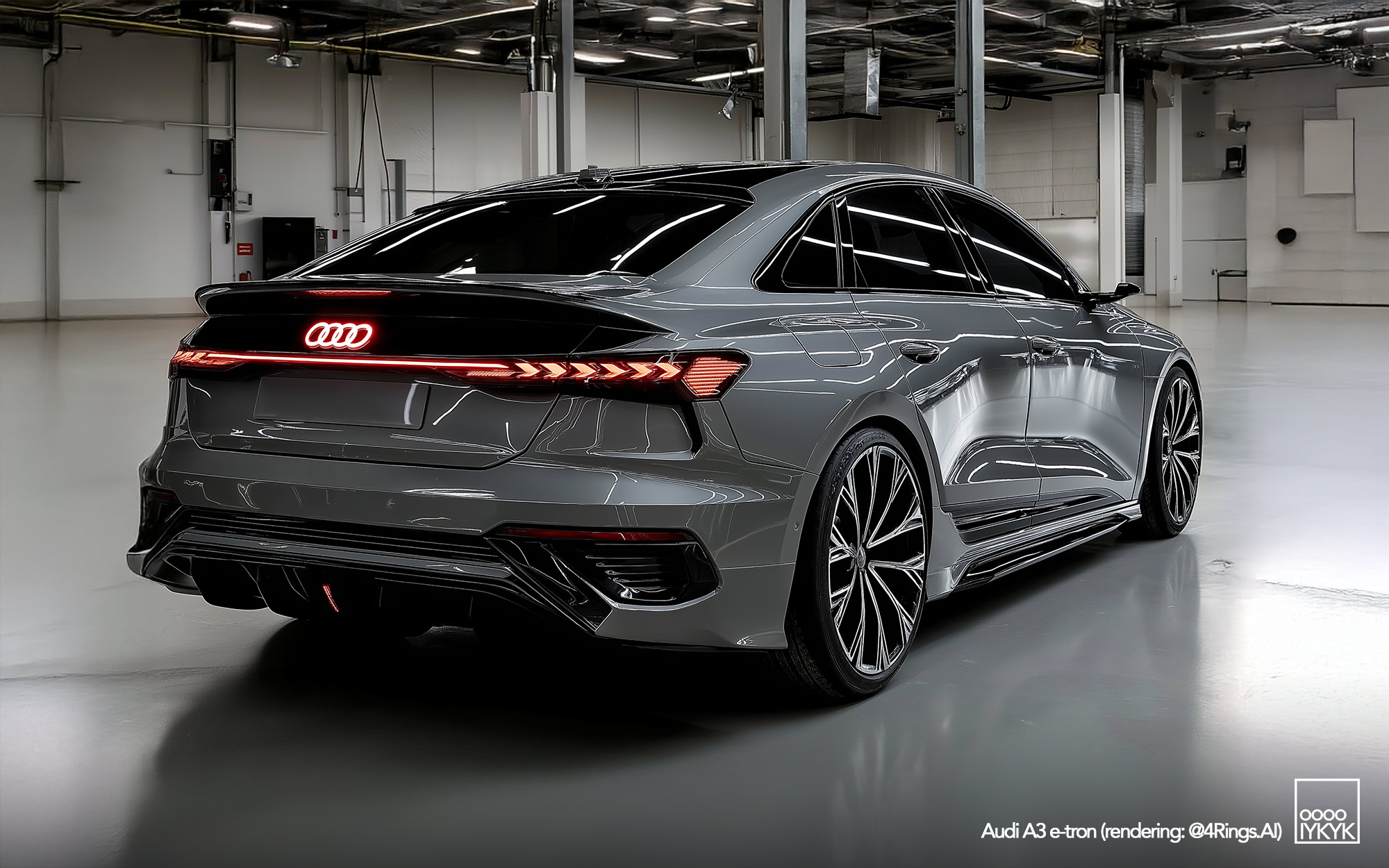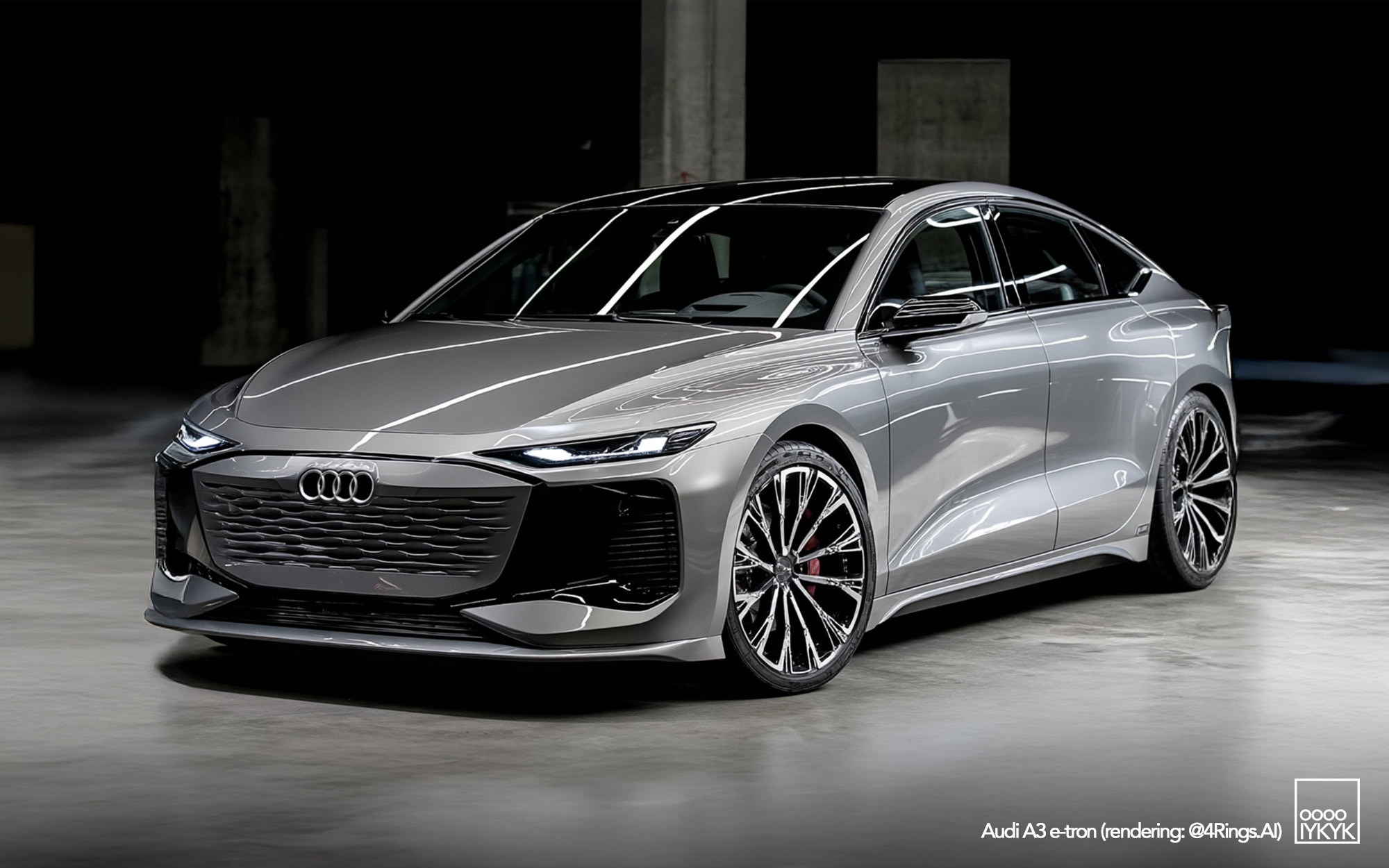Audi’s strategy to electrify all core product segments naturally includes its long-running compact staple, the A3. According to reporting by AutoZeitung, the fully electric A3 e-tron is slated to enter production in Ingolstadt in 2026—one year earlier than previously indicated.
NAMEPLATE STRATEGY & POSITIONING
Most know Audi’s naming strategy had been in flux. Ingolstadt once planned to use even numbers exclusively for EVs, which would have pointed to this car in question being badged an “A2 e-tron” designating the compact with an even numeral. But in early 2025, Audi reversed course, choosing instead to keep the familiar nameplates also applicable to EV derivatives. This clears the way for the A3 e-tron badge to move forward.
Audi CEO Gernot Döllner reportedly confirmed the compact EV during an internal company meeting in 2024, also revealing that the car will be built alongside the Q6 e-tron and A6 e-tron at the Ingolstadt parent plant. In follow-up reporting with Süddeutsche Zeitung, Döllner moved the production start forward from 2027 to 2026.
Pricing remains speculative. With the VW ID.3 beginning around €33,330 and Audi’s current entry EV, the Q4 e-tron, starting above €46,000, AutoZeitung projects the A3 e-tron to slot near €40,000, aligning it squarely with premium compact buyers.

SSP DELAYED, MEB+ PLATFORM IN QUESTION
The biggest uncertainty surrounds the technical underpinnings. Audi had originally intended the A3 e-tron to ride on the forthcoming SSP platform, the VW Group’s upcoming highly scalable electric architecture. But SSP’s launch has slipped to 2029 at the earliest according to AutoZeitung.
That leaves Audi to rely on either the updated MEB+ platform—which promises improved range and faster charging—or the existing MEB architecture itself. However, AutoZeitung warns that even MEB+ may not survive internal cost-cutting efforts, potentially forcing Audi to adapt the current MEB.
If so, the A3 e-tron will remain tied to 400-volt technology, limiting charging speeds compared to rivals like Mercedes’ upcoming 800-volt CLA EV. Still, the MEB architecture has proven capable of strong performance, with VW’s dual-motor GTX models already offering up to 250 kW (340 hp).
Even still, SSP could be in play. Autocar has reported that Volkswagen’s next Golf—due in 2028—will be the first model on SSP. Developed at VW’s Braunschweig R&D center, the electric Golf will bring 800-volt technology, faster charging, and more advanced software functions including over-the-air updates.
VW development chief Kai Grünitz described SSP as “highly flexible and highly updateable”, while VW CEO Thomas Schäfer confirmed the Golf will anchor the rollout.
Given the rollout and the traditional shared development of the Golf and the Audi A3 are both so close, this does make one wonder why Audi wouldn’t wait for SSP and its associated electronic hardware and software components developed in that joint venture with Rivian. It certainly seemed like that’s what Gernot Döllner was referring to in this website’s story from Sept 08.
EXTERIOR & DESIGN DIRECTION
Visually, AutoZeitung expects the A3 e-tron to stick close to today’s Sportback five-door silhouette, with electric-specific cues such as a closed front fascia. Narrow daytime running lights, split beam elements, and potentially a full-width rear light bar with illuminated rings are all under consideration, echoing Audi’s latest A6 e-tron design language.
The rendering in the AutoZeitung story emulates the current A3 Sportback shape – a five-door hatchback with low Avant-like C-pillar that’s less upright and utilitarian than the VW Golf. However, that story also makes mention that China may also receive a locally produced hatchback variant… which is a little confusing.
Is it possible that this next A3 e-tron Sportback could shift the A3 Sportback’s traditional hatchback style for more of a sedan-inspired Sportback launched with the first A7 and seen most recently on the A6 e-tron? I went that way with the @4Rings.AI renderings used in this story.
Whatever the case, AutoZeitung seems to suggest that European buyers are expected to be the primary audience for the A3 e-tron. If it’s to be sold in America though, the more sedan-like form may prove the more traditionally obvious choice.
INTERIOR MORE SPACE, FAMILIAR TECH
One of the clearest benefits of electrification will be felt inside. Thanks to a longer wheelbase, shortened overhangs, and a smaller engine bay, the A3 e-tron should deliver a noticeably roomier cabin than the facelifted 2024 A3.
Infotainment will align with Audi’s larger EVs, likely borrowing heavily from the A6 e-tron’s widescreen setup. Still, AutoZeitung cautions that the most expensive cockpit elements—such as dual passenger-side displays—may not filter down to this cost-sensitive compact class.
ENTHUSIAST TAKEAWAY
Since its 1990s debut, the A3 has been Audi’s perennial premium compact, and its eventual shift to full electrification has felt inevitable. Delays tied to VW Group’s platform roadmap have slowed progress, but with production now targeted, the A3 e-tron appears to be firmly in the pipeline.
For enthusiasts, the key point is that Audi intends to anchor the compact segment with an EV offering despite corporate platform challenges. Likely the A3 e-tron will serve as both a bridge to or launch of SSP and a test of how much Audi can infuse its compact class with premium EV DNA.


